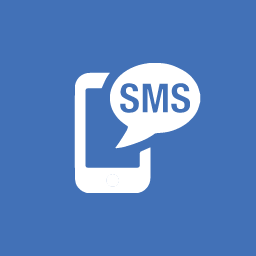How Ariel Rechtshaid Pushed Adele To Her Limit
The super-producer had her “yelping and screaming at the top of her lungs” for “When We Were Young.”
The way producer Ariel Rechtshaid describes it, it sounds like Adele either underwent an exorcism during the recording of 25 standout “When We Were Young,” or tried her hand at an avant-garde performance piece. “I had her kind of yelping and screaming at the top of her lungs,” Rechtshaid admits, speaking on the phone from L.A. Listen to the final chorus and you’ll hear what he means, as her voice cracks, snottily snarling I’m so mad I’m getting old / It makes me reckless.
Rechtshaid is used to pushing the artists he works with in unusual directions. As well as helming records for artists such as Haim, Sky Ferreira and Vampire Weekend, in the past few years he's been in high demand by the mainstream, giving a leftfield touch to tracks on big pop albums. Perhaps this can be traced back to 2012, when he made R&B cornball Usher sound like a whole other artist on the simmering “Climax.” In the past 12 months alone, he’s worked with Madonna on her comeback single “Living For Love,” Carly Rae Jepsen on E•MO•TION standout “All That,” and Beyoncé on the sprightly and soulful “Ring Off.”
On 25, Rechtshaid joins a diverse raft of contributors including Danger Mouse, Max Martin and Bruno Mars, and worked on “When We Were Young” with two of his frequent collaborators: Canadian troubadour Tobias Jesso Jr. and classical mastermind Nico Muhly. (He also produced a more uptempo bonus track on the record.) And while the pairing with Adele might seem unexpected for Rechtshaid, he certainly has form with chart-dominating ballads—the first smash single he produced was Plain White T’s “Hey There Deliah,” a song that hit to the hearts of an audience around the world. Obviously, Ms Adkins knows all about that.
How did you first meet Adele?
It was [through] Tobias Jesso Jr., who I had worked with before on his record and a few other things. Obviously, [Adele] was a fan of his record, came to L.A., and wrote some stuff with him. I heard rumors of them calling me, and then when it came to this song, I was at Cannes Film Festival in France and they called asking if I was available to meet Monday. I just popped over to London for four days and we worked on two songs together. We got to know each other, talked about what she was into, what she was looking for.
What was she looking for?
The truth is, she didn't really give me a whole lot of information. She said, "I love this song, but I do have a lot of ballads on the record. So do what you will with that information." Tobias happened to be in London on tour—he came in the studio and played piano. A friend of mine, Nico Muhly, also happened to be in London and we were just gonna hang out, but he came to the studio and we worked on a little arrangement for the end of the song. I came back to L.A. and just started chipping away at a rhythm track for it. It was difficult—with a piano ballad, it's hard to put together a rhythm track that isn't over-the-top dramatic, kind of epic. I was trying to go with something a little bit funkier.
“When We Were Young” reminds me of Gladys Knight.
Well, that would be more of my perspective. And I think hers as well! I just don't want to speak for her.
Was it a concern for you that a star like Adele would come to you wanting the 'Ariel sound'?
I don't think she was after that. There's just a way that I do things. I did her voice on Pro Tools in London, for practical reasons, and the rest of it was cut in L.A. on tape, pretty much live. It was a delicate thing, because the song has an old soul vibe to it, but I wanted to keep it a little bit more modern. The song kind of feels like a lot of different vignettes, reflecting on different times in your life and different people, so all these instruments—bass, drums, piano—felt like other characters.
How long did the actual recording take?
We spent one day at Metropolis studios and two days at Dean St, [which is] very fast for me. Not necessarily very fast to complete a song, but I tend to be part of conceptualizing the whole record, and that usually requires feeling out certain songs several times until you find the sound of the record. But in the case of one song, with no context...
Was it freeing to have no context?
Yeah, it was a little bit freeing. You just go with your gut and see what happens. I was pretty nervous the first time I played [the finished song] for her—we did it over a face chat. She loved it. I think it's an emotional song for her so I'm not gonna give it to the production, but there was definitely a little bit of tearing up. I think it might have been a relief as well that the song came out well. That can be a stressful thing, when you're putting the production in someone else's hands and just hoping that it captures the right feeling. It takes trust, and it's also a hard thing to communicate.
Was there anything surprising about the way she uses her voice?
You know Adele for being a phenomenal singer, but it floored me to hit record and hear that [voice] come through speakers. It was maybe one or two takes, honestly. The first line came through, she nailed the emotion, and then she just took it all the way home. And then we experimented a bit with background vocals on the next day.
And that was her doing the multi-tracking the following day?
Yeah, and then when I got back to L.A. I had some additional ideas. I sang some [of them], and I had Tobias come in and sing some just because it sounds better with two voices. We wanted to do something together to send back to her as a reference to have her sing more. She said she just liked it and to leave it in there. Our voices are in the background as well; it sounds kinda weird and cool.
Tobias told Rolling Stone that Adele improvised a lot with the lyrics in this particular song. What stage were they at when it came to record?
It was mostly done. There was one part that we kind of worked out together—just before the middle eight it drops out, and I had Adele sing it in a lower register. I mean she’s such a good singer so it can come off sort of effortless, and I felt that it needed to have a little bit more cry to it. I just had to push her beyond her means. She was confused as to what I was having her do, but in the end it all sounds really cool together.
“When We Were Young” is probably going to be a number one song in the next couple of months. How does that make you feel?
Um, I don’t know. I’ve always approached music the same way no matter what record I’m working on—trying to bring out what is unique about the artist I’m working with and really zero in on the emotions. That doesn’t necessarily mean that you’re making it more palatable for people you know? So it’s too surreal to think about. I mean at the end of the day Adele is just a sweet young woman. We’re all just out there doing our thing, and when you start thinking about what sort of impact it has on the world it’s overwhelming. I think it's the first record that I've produced that my voice has wound up on.





